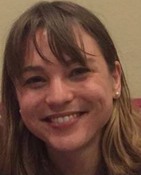Using Neural Networks to Extend Cropped Medical Images for Deformable Registration Among Images with Differing Scan Extents
E McKenzie1*, N Tong2, D Ruan1, M Cao1, R Chin1, K Sheng1, (1) UCLA, Los Angeles, CA, (2) Xidian University, Xi'an CN
Presentations
MO-IePD-TRACK 4-7 (Monday, 7/26/2021) 5:30 PM - 6:00 PM [Eastern Time (GMT-4)]
Purpose: To improve deformable image registration (DIR) among images with different scan extents, we train a neural network that fills the missing volume of head-and-neck CT’s.
Methods: We trained a generative adversarial network on a dataset of 409 head-and-neck CT’s to predict anatomy in the missing volume using the cropped 3D images as input. The network used a U-Net generator with VGG deep feature losses. To test the DIR improvement, we deformably registered combinations of a randomly cropped, full, and predicted full volume on 53 unseen test volumes to a single cropped, full, and predicted full target. We tested our method’s robustness by performing the same registration combinations with progressively increasing the amount of cropping. Registration performance was measured using 95% Hausdorff distance across 16 contours.
Results: We successfully trained a network to recover large missing volumes of incomplete images. Registration with predicted full images was not significantly different from registration using original full images. The average contour matching error for full image registration was 9.9mm, while our method was 11.6mm, 12.1mm, and 13.6mm for predicted-to-full, full-to-predicted, and predicted-to-predicted registrations, respectively. Registration of the cropped images had errors of 31.7mm and higher. Plotting the registered image contour error as a function of the initial error shows that our method is robust to registration difficulty. Predicted-to-full registration was statistically independent of cropping extent up to 18.7cm superiorly cropped. Predicted-to-predicted registration was robust, with a -0.04mm change in average contour error for every millimeter of cropping.
Conclusion: Differences in scan extent is a major contributor to inaccuracies in deformable image registration. We address this by training a network to complete cropped 3D images. Predicted full images can be registered to the same accuracy as full images and are robust to differences in crop extent.
Funding Support, Disclosures, and Conflict of Interest: NIH R44CA183390
ePosters
Keywords
Computer Vision, Registration, Image Processing
Taxonomy
IM/TH- Image Registration: General (Most aspects)
Contact Email



